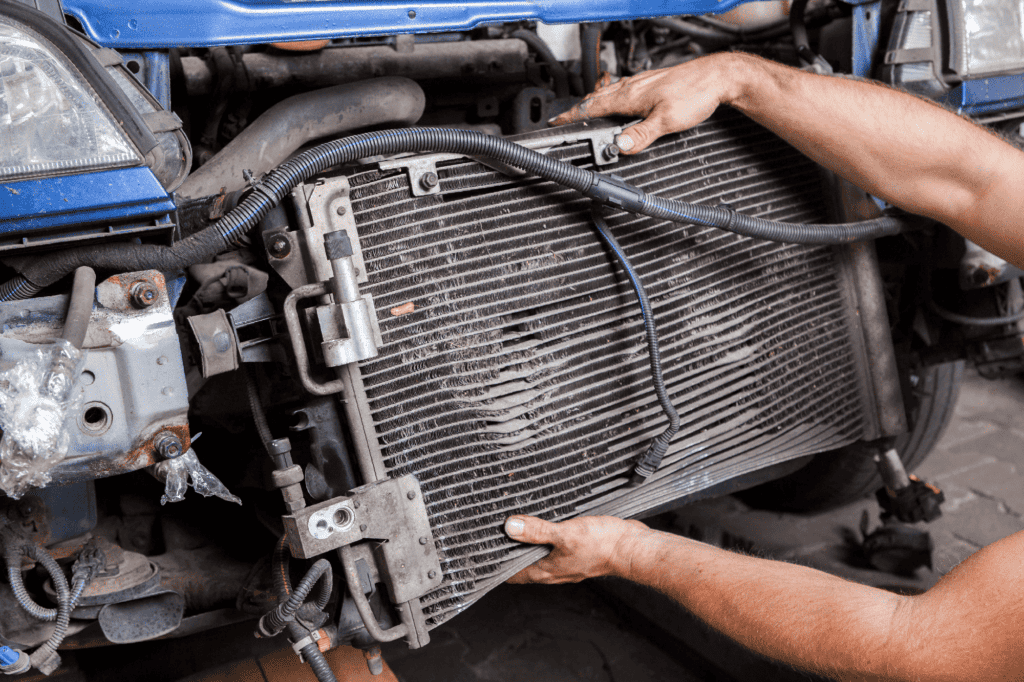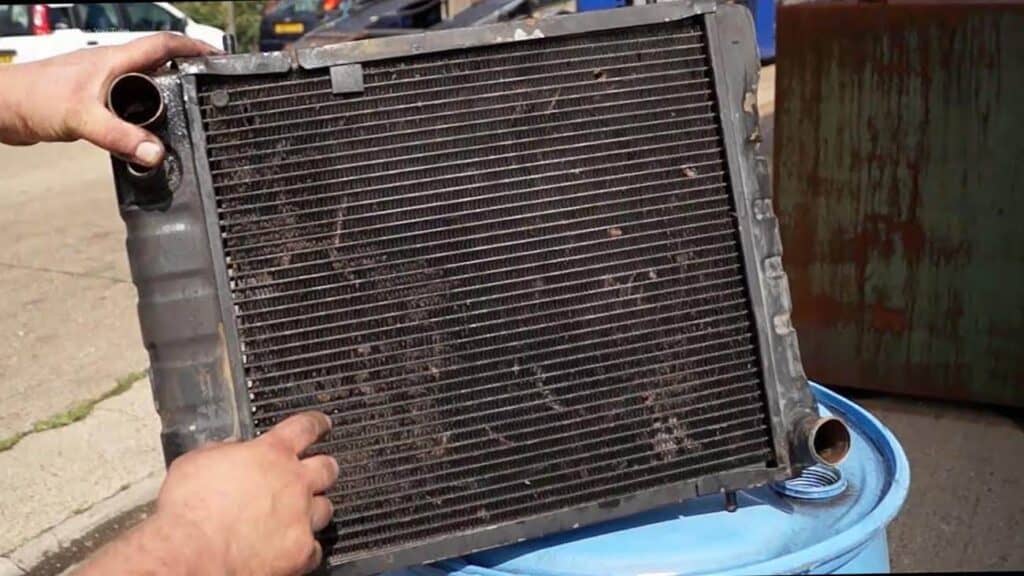The High Stakes of Overlooking Radiator Maintenance
You know how ignoring a toothache can lead to a root canal? Well, overlooking radiator maintenance can have equally drastic consequences for your car. Acting as the knight in shining armor of your engine, the radiator works tirelessly to regulate temperature and keep everything running smoothly. But when you ignore its upkeep, you’re essentially welcoming a slew of problems into your car’s life. While it might be easy to dismiss radiator maintenance as just another tedious task on your vehicle’s to-do list, failure to prioritize it can result in significant, and sometimes devastating, issues down the line.
When we say “high stakes,” we’re not talking about a poker game; we’re talking about the potential for your car to transform from a reliable mode of transport to a money-draining nightmare. Neglecting your radiator may not lead to immediate problems, but it’s akin to playing Russian roulette with your engine’s well-being. The cost of ignoring a radiator’s maintenance could range from expensive repairs to complete engine failure, which can set you back thousands of dollars and leave you stranded on the roadside. In this article, we’ll unpack the various ways your life can go from 0 to 100—real quick—if you decide to overlook the care of your car’s radiator. Sit tight, as we navigate the turbulent waters of radiator neglect and arm you with the information you need to steer clear of disaster.
The Heart of Cooling: Why Your Radiator Matters
Imagine your car’s engine as an Olympic athlete, running a marathon in the blistering sun. It’s pushing the limits, generating a ton of heat, and it needs something to keep it cool and functioning optimally. That’s where the radiator comes in. Acting as the heart of your vehicle’s cooling system, it pumps coolant through the engine, absorbing and dissipating heat to keep temperatures at a manageable level. It’s more than just a sidekick; it’s a lifeline for your engine.
Consider this: An engine without effective cooling is like that marathon runner without water or shade—a meltdown waiting to happen. Overheating isn’t a trivial concern; it can lead to warped parts, cracked gaskets, and in severe cases, complete engine failure. In other words, the radiator doesn’t just affect the engine; it’s a linchpin in your car’s overall performance and longevity.
A failing radiator can be the villain in a tragic tale of an overheated engine, which can cost you dearly—both in terms of repair bills and the long-term health of your vehicle. Replacing a thermostat might set you back a few hundred dollars, but engine replacement can cost thousands. In the grand scheme of things, the radiator plays an irreplaceable role in keeping your car running smoothly and your repair costs manageable.

Ignoring the Warning Signs: What a Radiator Warning Light Is Telling You
If your car’s radiator warning light is on, it’s basically crying out for attention. Ignoring this light could be a recipe for disaster.
• Varied Signals, One Light: The warning light isn’t a one-trick pony; it could indicate multiple issues. This can range from low coolant levels to leaks or even a malfunctioning radiator fan.
• Cost Implications: Ignoring this little glowing warning can punch holes in your wallet. For instance, low coolant levels might just need a $20 refill, but a faulty fan could set you back around $300.
• The Snowball Effect: Think of it as a small snowball rolling down a hill, picking up size and speed. Ignoring these early warning signs allows minor issues to escalate into major problems—ones that will cost significantly more to fix.
The Domino Effect: What Happens When Your Radiator Fails
When the radiator fails, it triggers a domino effect of issues that can compromise your vehicle’s performance and safety.
• The Initial Tumble: The failure of a radiator isn’t a standalone event. It’s the first domino to fall in a line of potentially many. Once it tumbles, you can expect a series of mechanical misfortunes.
• Engine Overheating: The most immediate consequence is often engine overheating. This isn’t just a matter of a hot car; it can lead to irreversible engine damage.
• Head Gasket Havoc: When things get hot, they expand. In the case of an overheating engine, this could mean a cracked or blown head gasket, which is both a complex and costly repair.
• The Worst-Case Scenario: At its most extreme, a failing radiator can lead to total engine failure. Think of it as the last domino that falls, sealing your car’s fate and forcing you into either a comprehensive overhaul or the hunt for a new vehicle.
By understanding what these warning signs and potential issues mean, you arm yourself with the knowledge to prevent a small problem from becoming a car-sized headache.
From Bad to Worse: The Journey of a Neglected Radiator
We’ve all heard the phrase, “A stitch in time saves nine.” In the context of your car’s radiator, these words carry a weight of truth that’s hard to ignore. Picture this: you notice a small puddle of coolant under your car. Your vehicle starts showing subtle signs of overheating on longer journeys. This is where the journey of a neglected radiator often begins. Fail to address these symptoms, and you’ll soon progress from a minor annoyance to an unfolding saga of increasingly dire problems. The radiator may develop cracks, and your engine could start overheating on even the shortest trips. You may even find yourself stranded in the middle of nowhere as your car refuses to start.
Now, you might ask, “What causes radiator damage?” The answer is often mundane yet deadly—neglect. Over time, coolant loses its effectiveness, rust and debris can accumulate, and the radiator can deteriorate. Failing to flush the radiator, ignoring the telltale signs of leaks, and not replacing old coolant can rapidly accelerate this journey from bad to catastrophic. You’re not looking at just an inconvenience; you’re potentially gambling with your car’s lifespan. A radiator on its last legs might hold out for a few months, but it’s a ticking time bomb.
Flush and Forget? The Importance of Coolant Maintenance
Ah, coolant maintenance—the stepchild of car care tasks that often gets pushed to the back of our minds. But here’s the thing, the role it plays is far from minor; in fact, it’s crucial to your car’s well-being. Flushing your radiator is not just some “nice to have” on your maintenance list; it’s a “need to have.” Why? Because this simple act can prevent your radiator from corroding and clogging, ensuring that it performs its cooling duties efficiently. A general rule of thumb for a coolant flush is about every 30,000 km to 50,000 km, depending on your car’s make and model.
But what’s the financial angle? Consider this: the average cost for a coolant flush service ranges around $100. In contrast, the price tag for repairing or replacing a damaged engine due to a faulty radiator can run into thousands of dollars. In essence, this modest maintenance service is a small investment that can yield substantial dividends in the long run. So, the next time you think of pushing that coolant flush to the bottom of your car care list, remember that a little proactive care can save you from a colossal headache (and hit to your wallet) down the road.

Financial Fallout: A Cost Comparison of Preventive vs. Reactive Measures
• Preventive Measures Are Affordable: A regular coolant flush, often recommended every 30,000 km to 50,000 km, might only set you back around $100. This seemingly simple act keeps the radiator in peak condition, maximizing its lifespan.
• The Incremental Costs of Ignorance: Ignoring minor issues can lead to medium-sized problems that need immediate attention. Replacing a faulty thermostat or repairing leaks could cost between $150 and $300. These are costs that could have been avoided with regular maintenance.
• Radiator Replacement Isn’t Cheap: When you’ve missed the boat on preventive care, you might have to replace your radiator. This is a bigger hit to your wallet, usually ranging from $300 to $800 depending on the make and model of your car.
• The Engine: The Mother of All Expenses: The nightmare scenario is letting a bad radiator affect your engine. If that happens, get ready for a bill that could easily range from $2,000 to $4,000 for engine repairs or replacement.
• Hidden Costs: We’re not even accounting for the possible tow charges, rental car expenses, or even the potential loss of income from not being able to use your vehicle. These can add hundreds more to your total expenditure.
• The Simple Math: A $100 preventive measure can save you from a potential $4,000 problem. The numbers speak for themselves; investing in regular maintenance is more cost-effective in the long run.
Conclusion: The Road Ahead — How to Avoid the Costs of Neglect
By now, it’s clear that radiator maintenance isn’t just an optional errand—it’s a necessity. Consistent checks, periodic coolant flushes, and prompt attention to warning signs can save you not just money but also the inconvenience of a failed engine. To ensure your radiator—and your car—stays in peak condition, consider opting for a mobile mechanic service like Uchanics, where you can get professional radiator services without even leaving your driveway. So, steer clear of neglect; your radiator—and your wallet—will thank you.
Ready to get started? Book an appointment with Uchanics now and secure your ride’s long-term health.
